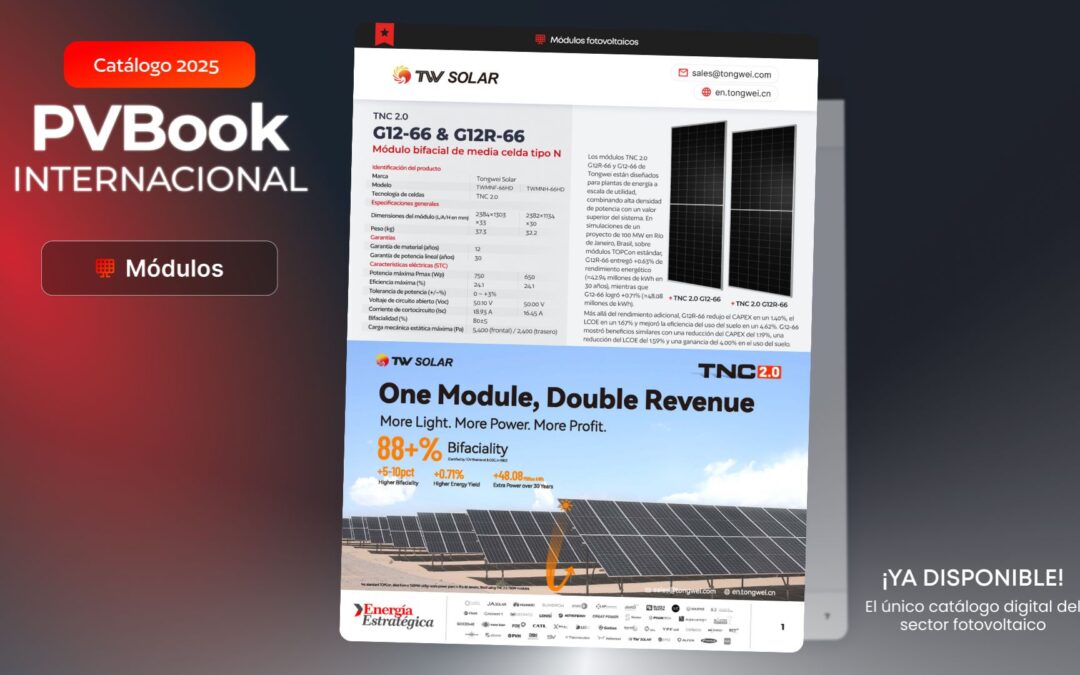The Ministry for Ecological Transition and the Demographic Challenge (MITECO) closed October with intense administrative activity that left a mixed balance: more than 1 GW in energy projects approved and about 650 MW rejected.
The month confirmed the dynamism of the photovoltaic sector and the progress of hybridizations with storage, although it also highlighted the growing difficulties in connecting new plants to an electrical system strained by a lack of grid capacity.
Among the most notable resolutions, Ignis positioned itself as one of the main developers with the administrative authorization of the HIB CTCC Escatrón hybrid project, of 311.2 MW, in Zaragoza, and the Broza Solar battery module, of 10.9 MW, which will be attached to an existing photovoltaic plant.
Metka EGN followed , obtaining the green light for the Coral Solar photovoltaic installation (150 MW) in Valladolid, and Iberdrola , which obtained approval for its Centenar Hybrid Installation in Huelva, with 39.9 MW of photovoltaics that will be integrated into the Centenar wind farm.
Together, these three operators account for almost half of the power approved by the Ministry during the month.
The list of authorizations was completed with relevant solar projects such as Martelilla (118 MW) by Benbros , OPDE Herrera (82 MW) by OPDEnergy , Cíjara (58 MW) by Endesa , Zafiro (44 MW) by Viridi RE and the Velilla del Río Carrión reversible pumped storage plant (156 MW) by CDR Carrión .
In total, the approvals amounted to approximately 1,006 MW, distributed mainly in Castilla y León, Andalusia and Castilla-La Mancha, three regions that maintain the investment pulse thanks to a combination of available land, solar radiation and evacuation capacity partially freed up by old projects that did not advance in time.
In addition, the Ministry published several favorable Environmental Impact Statements for initiatives by Endesa , Viridi RE , Capital Energy and Jinko Solar , which together represent an additional 275 MW at various stages of development.
On the other hand, the rejections mainly affected large international developers. Statkraft saw two of its photovoltaic plants in Valencia—Los Predios and Los Hierros, both 77 MW—rejected due to grid incompatibilities and environmental considerations.
Elawan Energy (Orix) also accumulated several rejections in Albacete, with hybrid projects such as Campanario IV and Campanario V, as well as Derramador and Fuente-Álamo, which combined photovoltaics, wind power and storage.
LCG Renewable Energies and Forestalia , for their part, received unfavorable rulings due to the saturation of connection nodes in Valladolid and Huesca, respectively.
In total, these decisions resulted in the rejection of more than 650 MW, reflecting a tightening of the MITECO’s technical and environmental criteria for projects located in areas of high energy density.
The trend also extended to voluntary withdrawals , including those of Zenital Green Energy (80 MW) and LCG Renewable Energies (66.5 MW), who withdrew their applications due to regulatory or financial difficulties in continuing the process.
The results from October reveal a process of streamlining the national renewable energy pipeline. While technically sound projects with hybridization are moving forward, older proposals or those with significant environmental impact tend to be dropped.
According to industry analysts, this dynamic reflects a phase change in Spanish energy policy, where the priority is no longer to approve volume but to guarantee efficient integration and grid stability.
The pace of MITECO’s resolutions is also explained by the pressure of administrative deadlines. Dozens of access permits granted in 2021 and 2022 under the previous regime will expire at the end of 2025, pushing companies to accelerate their hybridization and storage strategies to avoid expiration.
In that context, the presence of projects with BESS systems — such as those of Ignis, EDP Renovables and Endesa — confirms that storage is beginning to become a necessary condition for obtaining authorization, rather than a technological option.
If this trend continues, 2026 could open with a cumulative volume exceeding 10 GW assessed, consolidating the shift of the Spanish market towards hybrid configurations and stricter territorial planning.































